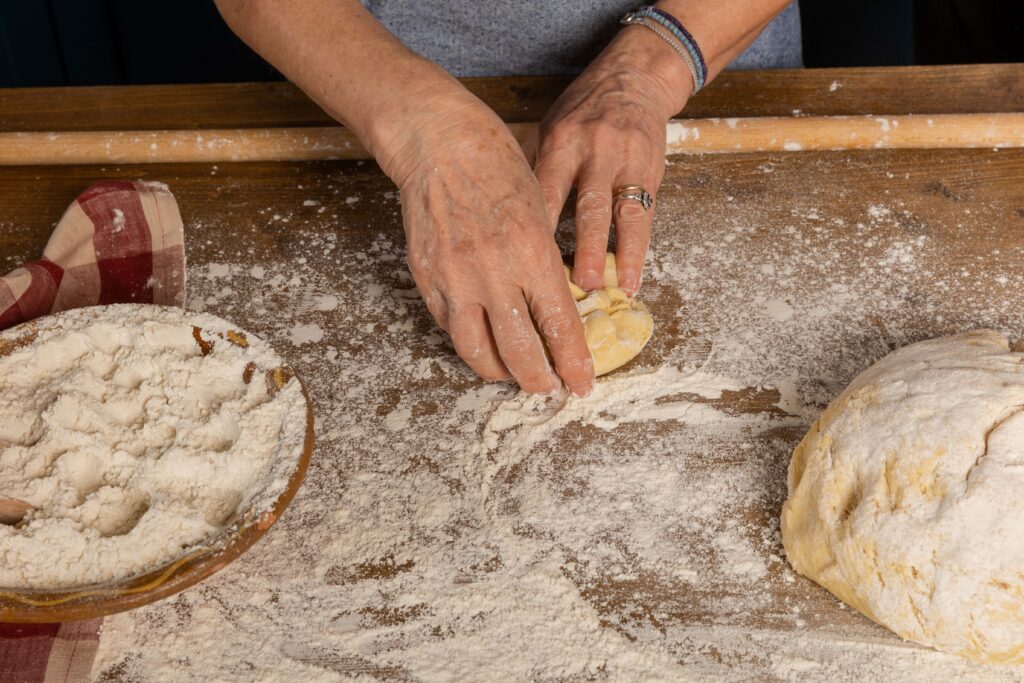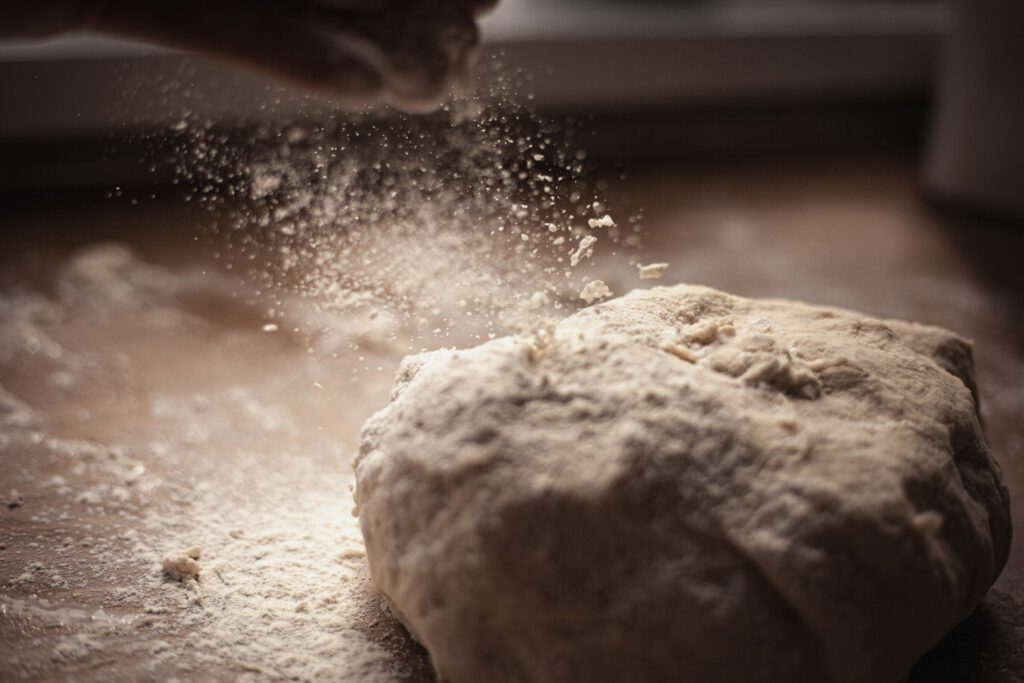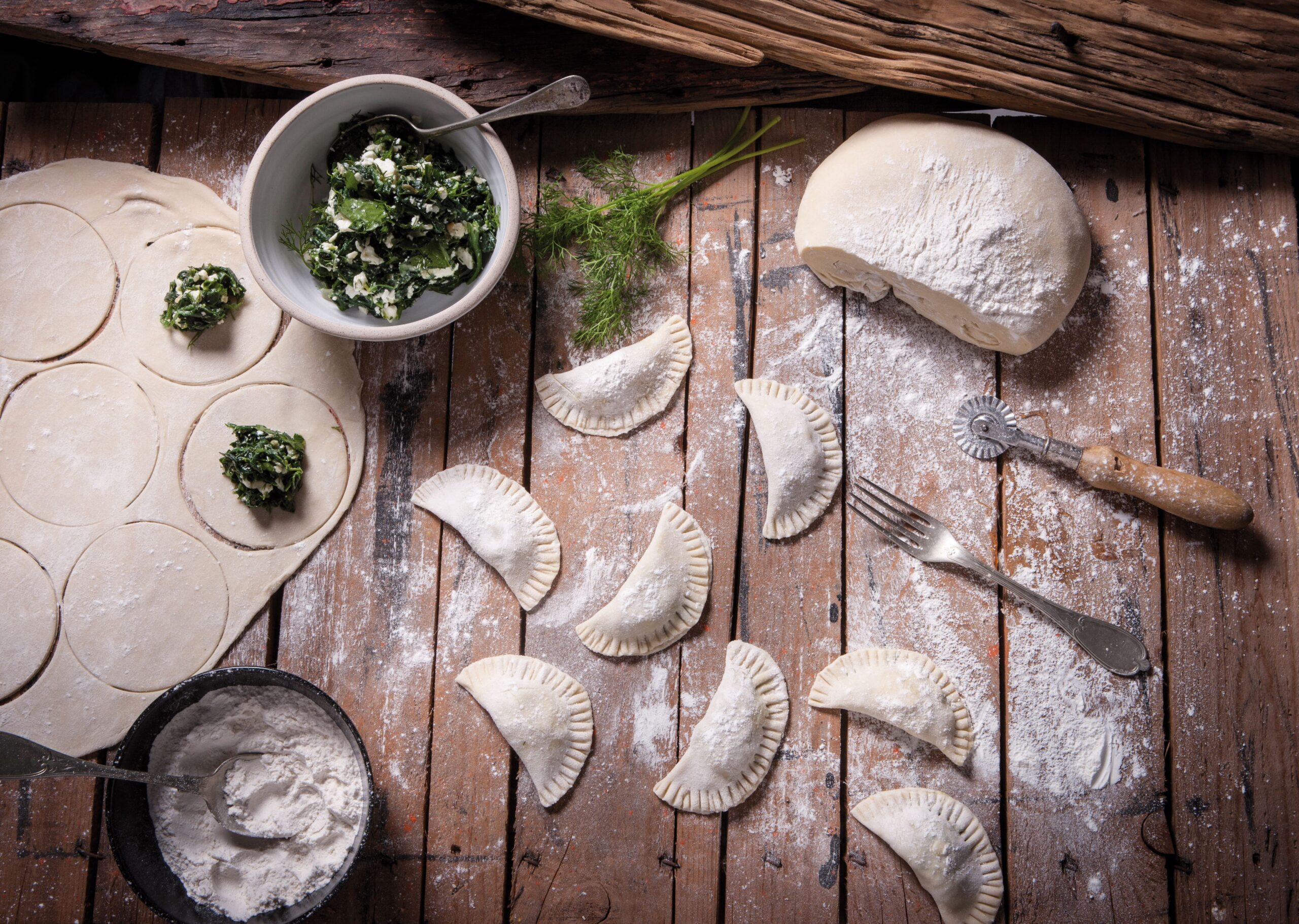The Art of Making More with Less
 Born in rural Greece and cherished by Greek families, Greek pies symbolize inventive cooking, nutritional balance, and surprisingly flavoursome combinations. As one of the most famous phenomena of Greek gastronomy, they unfold creativity and long tradition, becoming a classic favourite for anyone visiting Greece.
Born in rural Greece and cherished by Greek families, Greek pies symbolize inventive cooking, nutritional balance, and surprisingly flavoursome combinations. As one of the most famous phenomena of Greek gastronomy, they unfold creativity and long tradition, becoming a classic favourite for anyone visiting Greece.
Deeply rooted in Greek history, dating back to ancient times, the ‘pita’ Greek pie is a cultural gastronomic masterpiece. Recipes for these pies are passed down from generation to generation, with taste and seasonality as key inspirations. Greek pies are a culinary creation wrapped or enclosed between two or more layers of dough made of flour and water. They are thin and crisp outside with a fresh and juicy filling. The finest pies use homemade ‘phyllo’ like the ones rolled out on flour-dusted tables in every home in rural Greece.
The origins of pies extend beyond our recorded history. The Ancient Greeks enjoyed ‘pita’ with honey, oats, wine, and garlic on top as a nutritious breakfast, and they were also popular at symposiums and large gatherings. In the difficult times of the world wars, Greek pies were made from any leftovers or anything possible to be found in the fields and were the food that helped locals survive hunger. A great example of those pies are the ones made with just maize flour, water, and any available ingredient.
Traditionally, the ‘pita’ was primarily made with whatever was available in the household garden, the surrounding fields, and mountains, serving not only as a wholesome meal but also as an excellent way to preserve food for longer, especially before the invention and use of electricity and refrigerators.
Greek pies not only helped feed large families when food was scarce but also evolved into a desirable snack or even a main meal thanks to their great taste. This transformation was driven by their nutrient richness and the diversity of their ingredients. The talent and creativity of local cooks transformed these simple pies into delicately flavoured savoury dishes, showcasing remarkable culinary mastery. Greek pies are an excellent example of how previous generations approached cooking, reflecting how culinary practices are influenced by social, historical, religious, political, economic, and environmental factors.
Today, pies are an integral part of Greek culture and daily life. Each morning, bakeries throughout Greece, from bustling cities to the smallest islands and villages, offer a variety of pies with diverse fillings. Thanks to these delicious and nutritious pies, the Greek breakfast is renowned as one of the richest and most satisfying meals of the day.
Pies with spinach and feta cheese may be the most common and beloved among locals and travellers in Greece, yet a plethora of recipes use the most unexpected combinations. Even the most renowned gastronomy experts might not have envisioned or created the fusion of flavors found in traditional pies, which have evolved over many generations to become staples in contemporary Mediterranean gastronomy.
 Every region in Greece takes pride in showcasing at least a couple of extraordinary pies, each playing a significant role in the local culinary landscape. However, Epirus is often regarded as the heartland of Greek pies, known for its rich vegetation and free-range farming in the country’s northwest. Here, pies are filled with meat and wild greens and enriched with a variety of cheeses, all flavoured with an array of local herbs, creating a unique culinary mosaic that’s irresistibly tempting. Across the Greek islands and the mainland, each region cherishes its tradition of homemade phyllo filled with an array of imaginative ingredients. In Thessaly, pumpkin pies, without phyllo but a flour and water batter mixed with the filling, are popular. Thessaloniki is famed for ‘Bougatsa’, a custard cream-filled pie, and its savoury cheese variant, offering delightful options for any time of the day. Crete, Greece’s culinary paradise, is known for ‘Sfakiani Pitta’ and ‘Mizithropitakia’, both topped with artisanal honey. The Cycladic islands of Milos and Kimolos favour ‘Ladenia’, an open-faced pie with just tomatoes and onions. In Kefalonia, pies with seafood like cod and octopus stand out as both famous and original. Meanwhile, in Northern Greece, pies are made in spiral shape.
Every region in Greece takes pride in showcasing at least a couple of extraordinary pies, each playing a significant role in the local culinary landscape. However, Epirus is often regarded as the heartland of Greek pies, known for its rich vegetation and free-range farming in the country’s northwest. Here, pies are filled with meat and wild greens and enriched with a variety of cheeses, all flavoured with an array of local herbs, creating a unique culinary mosaic that’s irresistibly tempting. Across the Greek islands and the mainland, each region cherishes its tradition of homemade phyllo filled with an array of imaginative ingredients. In Thessaly, pumpkin pies, without phyllo but a flour and water batter mixed with the filling, are popular. Thessaloniki is famed for ‘Bougatsa’, a custard cream-filled pie, and its savoury cheese variant, offering delightful options for any time of the day. Crete, Greece’s culinary paradise, is known for ‘Sfakiani Pitta’ and ‘Mizithropitakia’, both topped with artisanal honey. The Cycladic islands of Milos and Kimolos favour ‘Ladenia’, an open-faced pie with just tomatoes and onions. In Kefalonia, pies with seafood like cod and octopus stand out as both famous and original. Meanwhile, in Northern Greece, pies are made in spiral shape.
The timeless tradition of Greek pie-making is a testament to the art of making more with less. From the humble kitchens of rural Greece to the bustling bakeries of its cities, Greek pies embody a philosophy of simplicity and resourcefulness. Creating abundance from minimal resources not only defines the essence of Greek pies but also reminds us of the importance of sustainability and creativity in everyday cooking.
 Good food comes in textures
Good food comes in textures
Today, Greek pies remain a most loved delicacy and a staple of Greek cuisine. Renowned chefs draw inspiration from local grandmothers, crafting pies with a twist but also in a traditional way. Whether in a quaint Greek bakery or a high-end restaurant, pies hold a special place on the menu as a popular choice.
The most crucial step in making ‘pita’ lies in the art of rolling out the ‘phyllo,’ the flaky pasty sheets. This crucial step requires selecting the finest flour, achieving the perfect dough consistency, and mastering the skill of rolling the dough to the ideal thickness to ensure the right texture
One of the main characteristics of Greek pies is their seasonality, with the best pies often linked to the freshness and availability of ingredients. When the raw materials are of high quality, the resulting pies are nutritious and delicious and a favourite at the family table. There are sweet and savoury pies, and all fulfil the expectations of an ideal snack, meal or dessert suitable for any time of the day.


